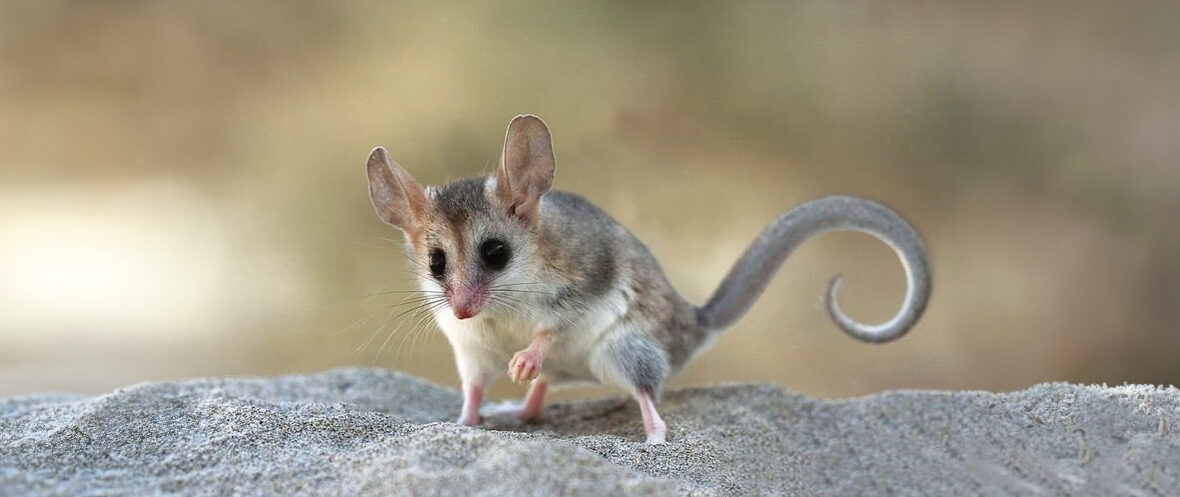
The Patagonian opossum dwells further south, in Argentina, than any other known living marsupial. They are 1 of the least known mammals of South America. They suffer from habitat loss and destruction at the hands of farming and ranching, which can cause soil destruction and desertification. But they are abundant enough to be listed as Least Concern by the IUCN. Their populations are decreasing though.
First the Stats…
Scientific name: Lestodelphys halli
Weight: Up to 3.2 ounces
Length: Up to 10 inches, including up to a 3.9 inch tail
Lifespan: Up to 4+ years
Now on to the Facts!
1.) These, like other opossums, are nocturnal (active at night).
2.) They are solitary and only come together to mate.
3.) There are no records of Patagonian opossums living in central Patagonia, which leads mammalogists to ascertain that they can only dwell in the Patagonian steppe.
4.) The 2 areas in the Patagonian steppe where these animals are often found are the province of La Pampa and Choele Choel (northern Rio Negro Province).
5.) It is believed that the Patagonian opossum may have emerged from the same ancestral group as Marmosa, considering they bear a close resemblance.
But wait, there’s more on the Patagonian opossum!
6.) Their shortened muzzle/jaws gives them a stronger bite potential.
7.) The fur is short, fine, and soft, unlike most other opossums that have coarser fur.
Did you know…?
These critters feed on birds and mice. In fact, 1 was recorded using a dead bird as bait.
8.) They have 50 teeth. Their canines are almost completely straight and abnormally long.
9.) Females undergo up to a 14 day gestation (pregnancy) that yields up to an estimated 19 joeys.
10.) While the female lacks a marsupium (pouch), she has 19 mammae (teats), and the joeys undergo a longer than normal lactation period.
Now a Short Patagonian Opossum Video!
This video talks about opossum facts in general.
Be sure to share & comment below! Also, check out the Critter Science YouTube channel. Videos added regularly!
Want to suggest a critter for me to write about? Let me know here.
Some source material acquired from: Wikipedia & IUCN
Photo credit: Animals.fandom.com



